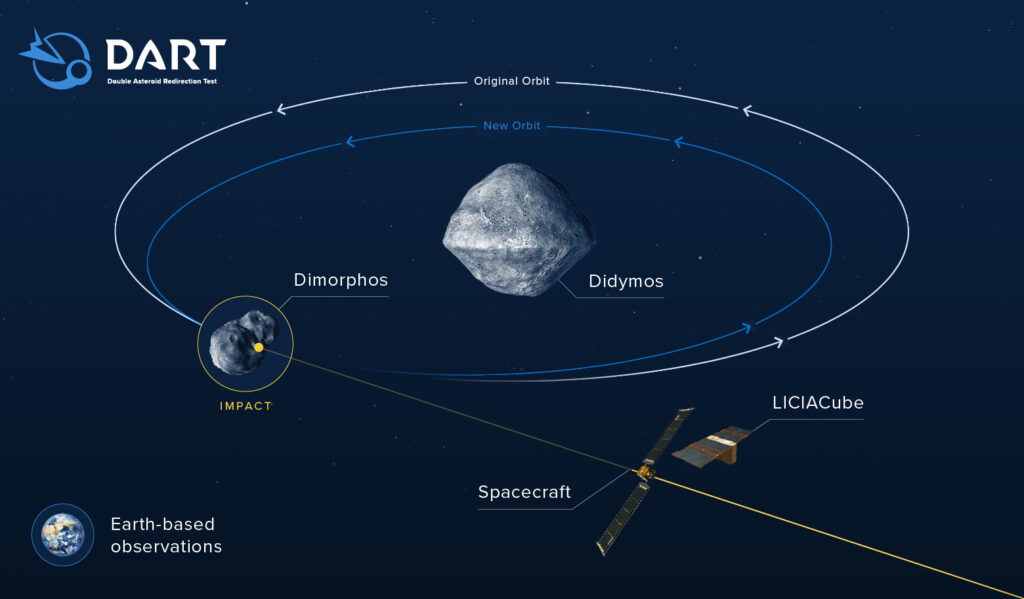
The results of the DART-LiciaCube planetary defence mission, conducted by NASA in collaboration with the Italian Space Agency (ASI), have been published in the prestigious journal Nature. The data collected during the pioneering experiment, which demonstrated that it is possible to alter the orbit of an asteroid in space, are described in five articles now available to the scientific community worldwide.
The test took place on 26 September 2022 when the DART interplanetary spacecraft crashed into the asteroid Dimorphos – a natural satellite of the planet Didymos, located about ten km from Earth – successfully changing its motion. The binary asteroid system was chosen as the target for the mission not because it posed a threat to Earth but to test kinetic impact technology which could be used in the future in case our planet should ever be found on a collision course with a potentially hazardous object.
NASA’s probe’s collision with Dimorphos was documented by LiciaCube: ASI’s small satellite developed and managed – with the National Institute for Astrophysics (INAF) as the scientific coordinator – by an all-Italian team of researchers from ASI, INAF, National Research Council (CNR), Polytechnic University of Milan, Alma Mater Studiorum University of Bologna and Parthenope University of Naples.
Three of the five articles published by Nature involve the Italian CubeSat research group that – as Elisabetta Dotto, INAF researcher and scientific coordinator of the LiciaCube team, pointed out – “played a key role in witnessing this event, acquiring unique images of great scientific value”.
Specifically, the first article focuses on the study that determined the momentum transferred to an asteroid by kinetic impact, while the second publication reports the observations made by the Hubble Space Telescope from 15 minutes up to about 18 days after the impact. The third article shows images obtained during DART’s approach to Dimorphos up to the moment the probe crashed into its target.
These first, relevant results are not, however, exhaustive of the wealth of knowledge and information gathered during this space mission. As Angelo Zinzi, ASI’s project scientist for the Italian satellite, said: “The work of the scientific team is far from over. In the coming months, we expect new publications based on LiciaCube data alone”.

